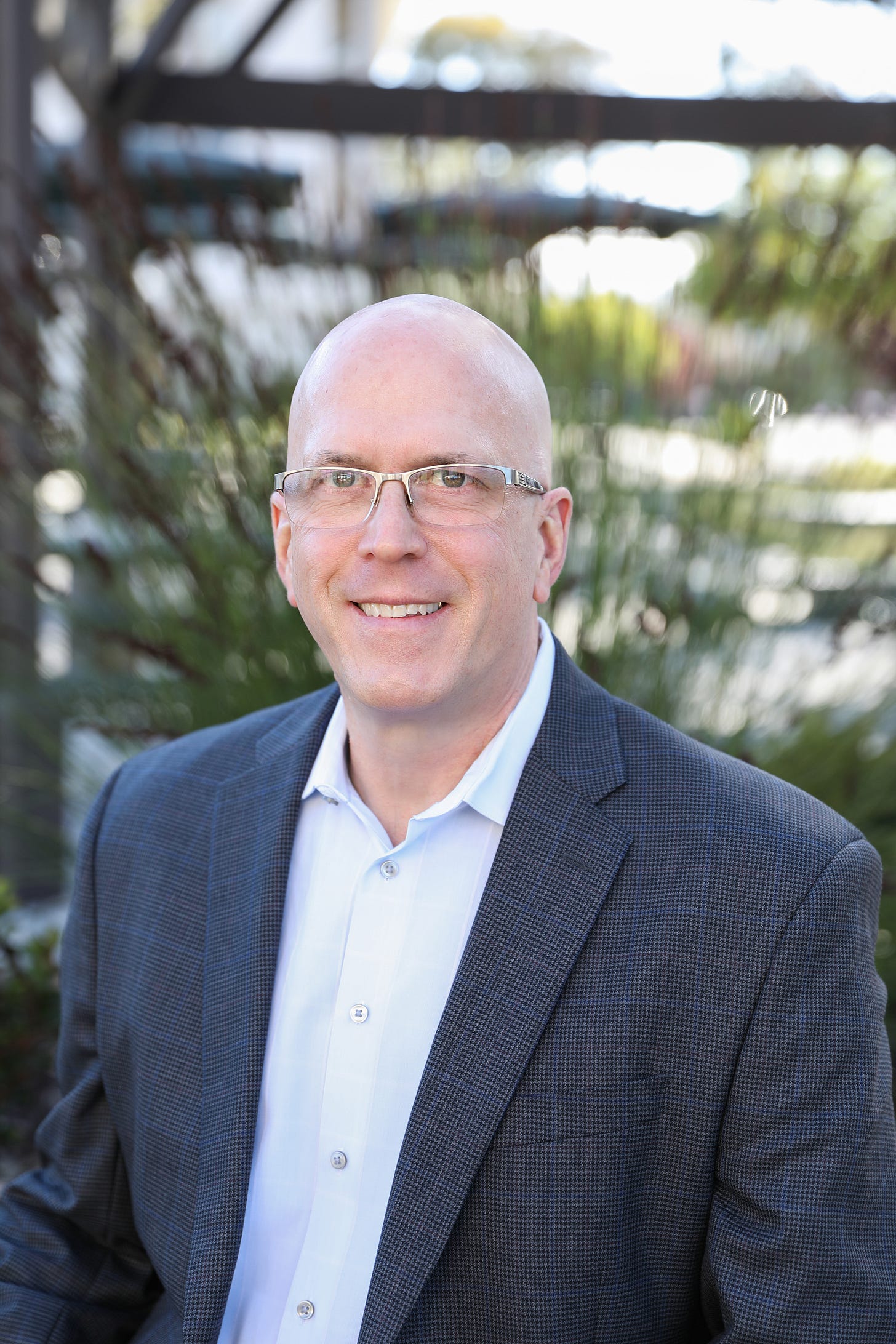Write What Only You Can Say
Why the most courageous voice you can use is the one you are afraid to share
In this raw, wisdom-packed interview, he doesn’t just talk about transformation—he embodies it. What follows isn’t just advice; it’s hard-earned truth forged in trauma, reflection, and relentless service. If you’ve ever felt the pull to reinvent yourself, this is the voice you want in your corner.
Q: Tell us a little bit about your background
I spent over three decades as a firefighter-paramedic in San Francisco, including leading our peer support team, where I helped first responders navigate the emotional toll of the job. That experience shaped my belief in the power of a proactive mindset and personal responsibility, especially in high-stakes environments. After recovering from PTSD myself, I became a professional coach working with executives and teams who face pressure daily. Today, I speak and write about how we can lead with clarity, stay grounded under stress, and build resilience—not just as a concept but as a way of being.
Q: Beyond the act of hitting "publish," what's the most courageous thing you've done as a writer on Substack?
The most courageous thing I’ve done as a writer on Substack is share the story of my own breakdown—and how it became the foundation for my work today. Writing about recovering from PTSD, not as a dramatic arc but as a slow, raw process, was deeply vulnerable. But it’s also what gives me credibility when I coach high-responsibility leaders. They don’t need more theory—they need to know it’s possible to lead powerfully even when life knocks you sideways. Hitting publish on that kind of truth felt risky, but the writing resonated most.
Q: Many people dream of writing but fear judgment or failure. What advice would you give to those who are hesitant to share their voice on Substack?
I didn’t start writing to build an audience. I started because there was something in me that needed to come out. At first, I wrote to my grandchildren—as if they were their father’s age—hoping to leave behind something real and useful for them one day. That relieved the pressure and gave the writing meaning beyond likes or shares. So, if you’re hesitating, write for someone you love. Write what only you can say. When your voice comes from that kind of place, it resonates—whether it reaches one person or a thousand.
Q: In your opinion, what's the most courageous thing a reader can do after engaging with your work?
The most courageous thing a reader can do after engaging with my work is to take that next step—whether it’s applying what they’ve learned to their own life or becoming part of the community by subscribing at a paid level. It’s one thing to read and reflect, but it takes real courage to invest in yourself and the conversation. By subscribing, they’re not just supporting my work—they’re committing to interact, challenge themselves, and be part of a community that’s all about growth. It’s that kind of engagement that leads to real transformation.
Q: Vulnerability is often a key component of courage. How do you balance being vulnerable with maintaining healthy boundaries as a writer in such a public space?
As a first responder, I was used to living a very public life—so writing openly isn’t new for me. But I don’t use my writing to process what I’m currently going through. I share stories and insights from past experiences, especially when they support the message I care most about: staying out of reaction and building a proactive mindset. Vulnerability is important, but it must be in the reader’s service. I offer paid subscribers direct access to me, and I welcome real engagement—but I keep those conversations professional and focused. That balance keeps the work clear, practical, and sustainable.
Q: Courage often involves taking risks. What's the biggest risk you've taken in sharing your writing or building your Substack community?
The most considerable risk I’ve taken was publishing an article right after the U.S. presidential election. I don’t share my political views—intentionally—because I want my work to reach people on both sides of the conversation. That piece wasn’t about politics but how we respond under pressure and the danger of letting reactivity drive our behavior. Still, I knew it could be misinterpreted. Hitting publish took courage—but it opened the door to meaningful dialogue. I heard from readers across the spectrum who felt seen. That experience reinforced my belief that honest, grounded writing can create connection—even across deep divides.
Q: What advice would you give to other thought leaders who feel stuck or unfulfilled but are hesitant to take the leap and reinvent themselves?
Don’t wait for the fear to go away. It won’t. Reinvention always feels risky—especially when you’ve built an identity around being the one others count on. But if you feel stuck or unfulfilled, that’s not a signal to push harder where you are—it’s a signal to listen. I had no roadmap when I stepped out of the fire service and into this work. Just a sense that something in me had more to give, and I couldn’t keep quiet about it. Start there. You don’t need to have it all figured out—you just need to tell the truth and take the next step.
Q: If you could go back and tell your pre-Substack self one thing about the journey ahead, what would it be?
I’d tell him: You don’t have to do this alone—and keep it shorter. When I started, I thought I had to carry the whole message every time, all in one post. My wife was the first to tell me, “These are too long.” She was right. I’ve learned to say one thing clearly instead of five things halfway. I’ve also learned to ask for help—whether it’s feedback, editing, or just talking ideas through. That’s made the writing better and the journey a lot less lonely.
Q: What’s the one thing that stressed you out the most as a writer, creator, and thought leader? And what are some of the tools you use to deal with stress?
What stressed me out most initially was the silence—wondering if what I was writing was reaching anyone. I’d put a lot into a piece and hear nothing back. That can really get in your head. What’s helped is learning to separate the value of the work from the reaction it gets. I come back to why I’m writing in the first place. I also use tools that keep me steady: daily meditation, walks, and honest conversations with a few trusted people. And like I wrote in a recent piece—I pay close attention to the stories I tell myself. If they’re not serving me, I rewrite them.
If you enjoyed this interview, and resonate with
way of being, subscribe and reach out! He would love to hear from you.👉 If you enjoy reading this post, feel free to share it with friends! Or feel free to click the ❤️ button on this post so more people can discover it on Substack





I loved this wonderful conversation with John. What resonated with me most is writing for our loved ones. I also used that technique to address my writer's block in my younger years. The benefit was that those stories appealed to readers better because they were heartfelt. Thank you, Magdalena, for introducing another inspiring writer to us. This was a delightful read for me
Another inspiring post John. Your voice comes through clear, compassionate, with so much wisdom to share, Excellent interview.